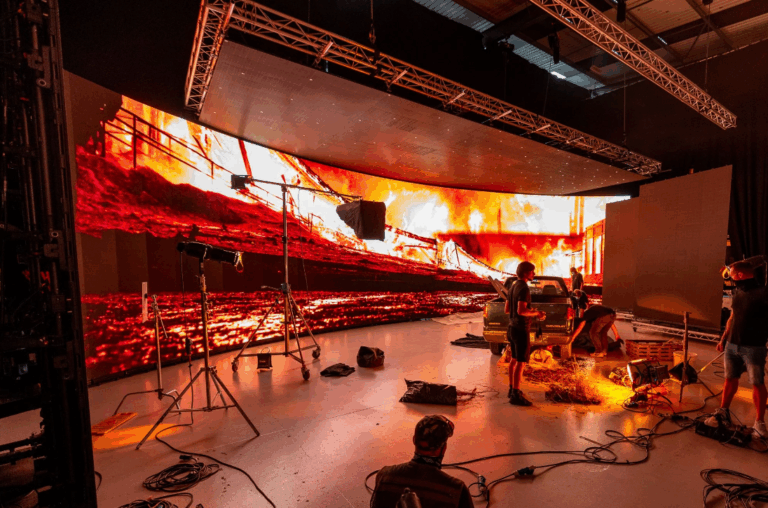Table of Contents
ToggleTable of contents
What is a wireless LED display
Features of wireless control LED display
The difference between wireless control LED display and wired display
The cost of wireless LED display
How to choose a wireless LED display that’s right for me?
What is a wireless LED display
Wireless LED display is a kind of LED display technology. Based on WEB information service technology, wireless LED display uses built-in high-performance GSM, GPRS, CDMA, 5G and other data transmission modules to utilize wireless communication networks such as GSM, GPRS, CDMA, and 5G. , Realize remote, real-time and large-scale networking information release of LED display. Here are wireless LED display cases.
Features of wireless control LED display
Remote management and update: Wireless control LED display allows users to remotely manage and update the displayed content. This means that you can change displayed text, images, videos, etc. at any time from any location without on-site operations.
Not limited by distance: Wireless LED displays can be used nationwide, as long as there is wireless network signal coverage, and can be used without distance or location restrictions.
Easy to install and maintain: Wireless LED displays are usually easier to install because they don’t require extensive cable connections. Additionally, remote diagnostics and maintenance capabilities help detect and resolve problems.
Security: In order to protect wirelessly transmitted content and control signals, wireless control systems usually use encryption technology and security protocols to ensure data security.
Real-time: wireless control can achieve almost real-time content updates. This is very important for situations that require quick reactions and timely updates, such as advertisements, emergency notifications, etc.
The difference between wireless control LED display and wired display
Connection method:
Wireless control LED display: Wireless display uses wireless communication technology (such as Wi-Fi, Bluetooth, RF, etc.) to transmit content and control signals. That means they don’t need to be connected by physical cables, and content can be streamed to the screen wirelessly.
Wired Displays: Wired displays require physical cables (such as HDMI, DVI, VGA, etc.) to connect content and control signals to the screen. This requires more wiring work and equipment.
flexibility:
Wireless control LED display: Wireless displays are more flexible because they are not limited by cable length and can be easily moved to different locations, suitable for various occasions, such as events, exhibitions and commercial advertising.
Wired Displays: Wired displays are limited by the length of the cables, usually require more planning and wiring work, and are not easily relocated.
Installation cost:
Wireless Controlled LED Displays: Wireless displays are usually less expensive to install because they don’t require a lot of cables and connectors. However, the wireless equipment itself can be more expensive.
Wired Displays: Wired displays typically require more installation work, including cable laying, wall or bracket mounting, etc., which can result in higher installation costs.
Maintenance and management:
Wirelessly Controlled LED Displays: Remotely managing and maintaining wireless displays is often easier because you can update content and monitor screen status remotely, reducing the need for on-site maintenance.
Wired Displays: Wired displays can require more on-site maintenance and management, especially when changing content or troubleshooting issues.

The cost of wireless LED display
The cost of a wireless LED display will be affected by many factors, including the specifications, size, resolution, brightness, quality, manufacturer, additional functions, and market supply and demand of the display itself. Costs are usually not limited to the purchase price, but also include costs such as shipping, installation, maintenance and possible subsequent upgrades.
The price of indoor wireless LED display is about 200-800 US dollars per square meter.
The price of outdoor wireless LED display is about 200-1000 US dollars per square meter.
How to choose a wireless LED display that’s right for me?
Show requirements:
Choosing a wireless LED display that suits you needs to consider many factors, including your specific needs, budget, usage scenarios and technical requirements.
Resolution: Based on your content and audience, determine the desired resolution. Higher resolution generally means sharper images.
Screen Size: Select an appropriate screen size based on the size of the display area and available space.
Brightness: Consider the environment in which the display will be used, such as indoors or outdoors, to determine the desired brightness level.
scenes to be used:
Indoor or outdoor: Different scenes require different types of LED displays, because indoor and outdoor lighting conditions and environmental requirements are different.
Static or dynamic: If you need to display animation or video content, make sure the LED display has sufficient refresh rate and frame rate support.
Budget:
Know your budget constraints so that you can select the appropriate equipment within your reach.
Control and manage:
Consider whether you need multi-screen management capabilities and the ability to manage and update content from remote locations.
safety:
If you need to transmit sensitive information or need to prevent unauthorized access, make sure the LED display communication is secure.
Durability and environmental requirements:
Consider the durability of the display, especially if it will operate in harsh weather conditions.
As your LED screen expert, we have prepared the LED display solution plan for you. Why not start by visiting our LED screens and get a free quote!

About Dylan Lian
Marketing Strategic Director at Sostron





